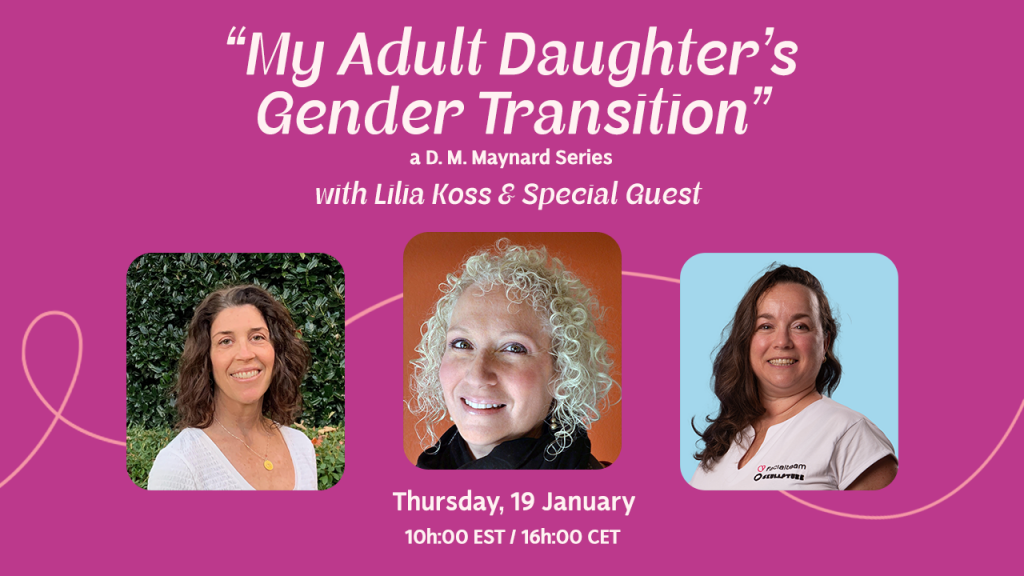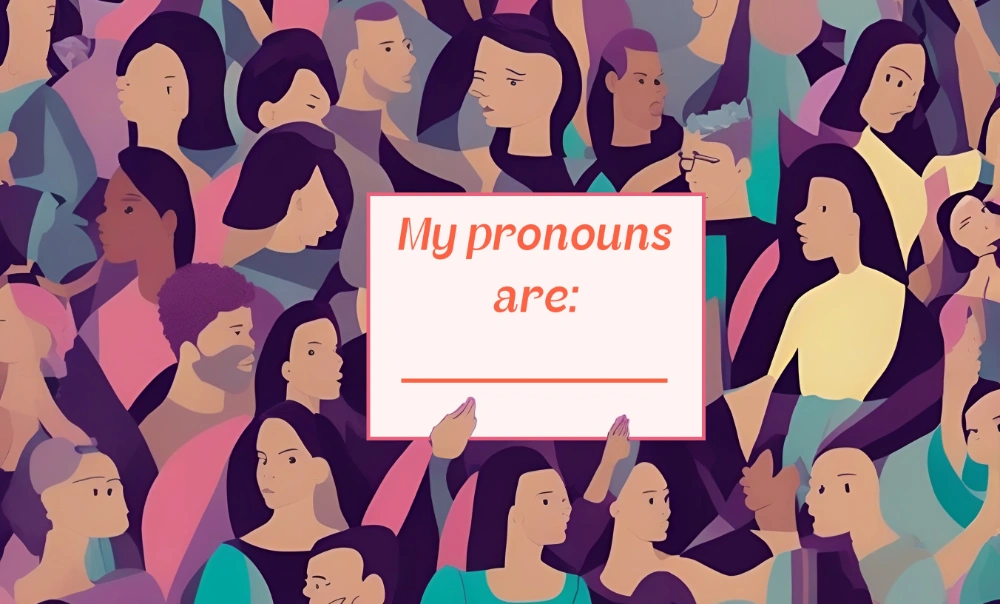Supporting My Trans Loved One: Changing Name, Pronoun/s, & Photos

When a loved one lets it be known that they need to change their name and/or pronoun, this knowledge can require parents, family members, and partners to relearn how to address them. Though all those in transition or questioning their gender may not elect to do so, it is not uncommon for this to happen. Adjusting to these changes can take time for some companions* while for others, it might be an easy shift and automatic.
Furthermore, visibly displaying photographs of your loved one prior to any aspects of their gender transition could be quite triggering and painful for them. However, removing these photographs as well as artifacts from the environment may feel extremely upsetting and heartbreaking for companions. These are two instances where communication and possible compromise will play a major role for all involved.
*Whenever it states companions, it refers to parents, family members, partners, and friends.”
The Importance of Learning and Affirming Your Loved One’s Name and Pronoun/s
What should I do if I incorrectly use my loved one’s name and/or pronoun assigned at birth? Who, if anyone, will correct others if they use the name and/or pronoun that is not affirming your loved one’s gender? Is “they/them/their” a singular pronoun? Can I ask to be part of the process when my loved one chooses their affirming name? What does “deadname” mean?
Even the most supportive companion may make mistakes when they are getting used to addressing their loved one in a way which honors and affirms their gender. Should these errors occur, as they often do, a sincere apology can go a long way. The key is to do your best but acknowledge if it happens, yet never intentionally misgender them. Should this continue to be challenging, another strategy that can help if apologizing does not feel like enough to your loved one is to correct your mistake immediately and restate whatever you were saying using their affirming name and/or pronoun.
It is also recommended that you practice using their affirming name and/or pronoun when referring to your loved one as you discuss or mention them. Moreover, it is often necessary to plan who will be told, who will tell them, what will you tell them, where will you tell them, why will you tell them, when will you tell them, and how will they be informed of your loved one’s affirming name and/or pronoun.
In addition, these unknowns should be discussed in reference to correcting, or not, those who are acquaintances, i.e., wait staff, medical personnel, store employees, and people over the phone. Two essential bits of information that must be understood is that “they/them/their” can be used as a singular pronoun and using your loved one’s name that was assigned at birth, which for many transgender and gender diverse (TGD) people, is known as their “deadname.”
Like anything new and unfamiliar, it can take time to grasp these changes and it may require much repetition. If companions desire to be part of the process when their loved one is selecting their affirming name, it is important to let them know but not demand this of them. Simply knowing you are interested in participating in this aspect of your loved one’s social transition can be seen as quite an affirming and welcoming gesture.
Negotiating Photos, Artifacts, and Postings on Social Media
For some TGD loved ones, viewing photographs and artifacts in any type of environment, including on social media platforms that does not represent their affirming gender, may be extremely triggering and/or devastating to them. This can be equally true for many when seeing their name and/or pronoun assigned at birth in connection to these same images.
To help elevate as much emotional angst as possible for your loved one, it is suggested that you have a conversation with them to find out which photos and artifacts they are not comfortable having you display. This can be photos and artifacts around your home, photos in your wallet or pocketbook, and/or photos and name/pronoun assigned at birth posted by you, family members, and/or friends on any social media formats. Artifacts can include but are not limited to diplomas, awards, birth or marriage certificates, reports cards, mail that still contains their name assigned at birth/deadname, and published items.
Partners
Navigating your spouse/partner’s affirming name and/or pronouns may not be an issue for some but rather a reason to celebrate. In fact, many spouses/partners** have shared numerous ways they have affirmed these changes with ease. While others have expressed that they found the affirming changes of their loved one’s name and/or pronoun to be quite unsettling and very hard to do. Some have stated that both experiences have been true for them, yet others have said they would not embrace these changes.
Regardless of where your response falls throughout your spouse/partner’s transition, it is never ok to shame or intentionally hurt your loved by using a name or pronoun that is not aligned with their affirming gender. For those who feel this request is too difficult to honor but are remaining in the relationship, seeking the assistance of a mental health professional who is experienced with trans issues can be extremely helpful. Moreover, having multiple open dialogues with your loved one is critical when sorting out what, if any, compromise can be made regarding these opposing needs.
One topic that spouse/partners of TGD people voice can be challenging is incorporating their loved one’s affirming name and/or pronoun during moments of sex/intimacy. Should the name and/or pronoun assigned at birth be said instead of the affirming name and/or pronoun at such a delicate and personal time, it is essential to acknowledge the error but also understand this can be part of the learning curve, especially early in the transition when much newness is being introduced for all involved.
**More than one person in a relationship may be exploring gender transition however, when there is a reference to the partner, it is in relation to the person who is either not in gender transition or to the partner whose gender transition is not the primary focus at this time. In addition, it must be recognized that relationship structures can be made up of a multitude of configurations.
Parents & Other Family Members
For many parents and/or family members, selecting their child’s name and using the pronoun that refers to them begins when the child is in the womb. Realizing this, it should come as no surprise to learn that being asked to adjust to your loved one’s affirming name and/or pronoun can be very emotional.
Though countless parents and family members have spoken about their ability to use their child’s affirming name and/or pronouns instantly, there are those who continue to struggle with this. If you identify with the latter and are feeling conflicted and/or are experiencing any sense of grief, loss, and/or pain in relation to this, as recommended above, seeking assistance from a mental health professional may be the best way to approach this hurdle.
One area many children will need their parents and family members support is when your loved one is dealing with schools. Regardless of the country and school, governing laws are often the guiding factor; therefore, knowing both parental and students’ rights are crucial. Understanding what can be done to respect your child’s needs is vital. If you are willing to honor what your child requests and ensure that the school abides by this, it can be a life-saving action and incredibly affirming.
Should your child be an adult, your support in acknowledging and using their affirming name and/or pronoun could also be lifesaving and help your loved one not feel alone as they navigate this part of their gender transition.
10 Steps to Help Companions Navigate Using their Loved One’s Affirming Name, Pronouns, and Photos
As a result of interviewing and providing workshops to companions and those in transition, several overarching suggestions have consistently been given as feedback for those who are navigating their loved one’s transition. These are practical ideas that may be helpful to you:
- Ask your loved one if they would include you when they select their affirming name.
- Practice using your loved one’s gender affirming name and/or pronouns.
- Understand that “they/them/their” are considered singular pronouns.
- Be patient with yourself if you use your loved one’s incorrect name and/or pronoun.
- Apologize to your loved one if you use their incorrect name and/or pronoun.
- Know it is never ok or appropriate for anyone to intentionally misname or misgender a person regardless of the circumstances, unless your loved one states it is acceptable.
- Honor your TGD loved one’s request to not post their name and/or pronoun assigned at birth on social media platforms and ask others to do the same.
- Communicate and if necessary, negotiate which photographs and other artifacts will and will not be displayed in your and/or your TGD loved one’s environment.
- Discuss who and how you and/or your loved one will address others should they incorrectly refer to or improperly use your loved one’s gender affirming name and/or pronoun.
- If your child is under the age of 18, insist the school uses your child’s affirming name and/or pronoun both in school and on social media platforms.
Embracing Everyone’s Needs Matter!
As positive and affirming as it can feel for TGD people to have companions and others use and accept their affirming name and/or pronouns, it should be acknowledged that this may not be embraced by everyone. Though it is recognized that an innumerable amount of parents, family members, partners, and friends share their excitement and understand the importance of affirming names and pronouns, some companions have stated they initially and/or only experienced a deep sense of grief and loss in connection to these changes.
Many companions have explained that they feel both joy for their loved one but also some level of sadness when asked to no longer address their loved one by the name and/or pronoun they were assigned at birth. It can never be overstated how names and pronouns are critically interconnected with the gender identity of all people. This is particularly true for those who know the name and/or pronoun they were assigned at birth does not align with their affirming gender.
In reference to photos and artifacts, being asked by your TGD loved one to remove significant photos and artifacts that can hold great meaning to you may be devastating. Even if companions grasp why this is being requested, many have found this quite heartbreaking and an erasure of their own history. Simply having an awareness of the impact all of this can have on spouses/partners and parents/families is significant.
If everyone has the willingness to gently discuss how this should be addressed and negotiated, it can have a positive effect on the outcome. As parents, family members, partners, and friends navigate their own thoughts and feelings regarding the crucial needs of their loved one, their personal journey in comprehending this reality may require some time and patience to learn, adjust, and use.
The hope is that once all those who are involved in the gender transition of a loved one are provided the space to respectfully voice and address their own needs, they will gain the ability to arrive at a place where they can support and accept their loved one’s affirming name and pronoun/s as well as find a balanced solution that is agreeable to all when displaying photos, artifacts in their environment, and on social media platforms.
Disclaimer
This blog is created to support the journey of parents, family members, partners, and friends of those who identify as TGD, non-binary, and/or are questioning their gender. We recognize the vital role that companions often play for those who are seeking any type of gender transition. Each post will address a different aspect and the various thoughts that may be part of the experience that impacts the lives of those who accompany their loved one throughout their gender transition. Its intent is never to negatively affect any person who is navigating their own gender transition, but rather to provide a platform where companions can feel heard and in turn, be present for their TGD, non-binary, and/or gender questioning loved one’s needs.





